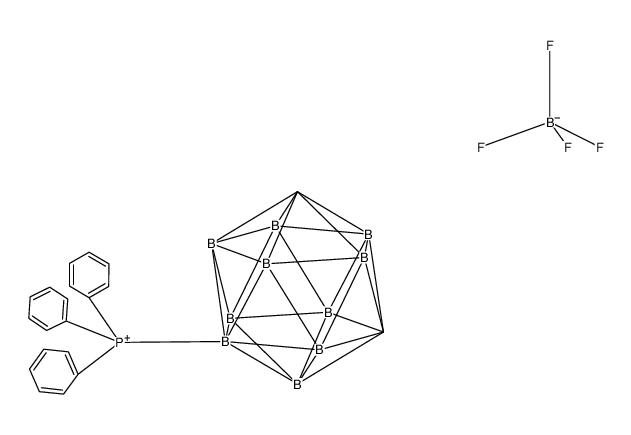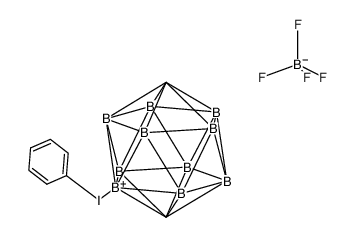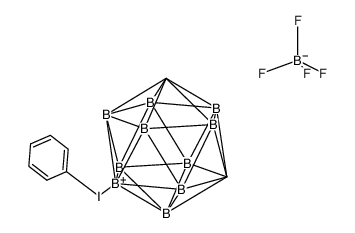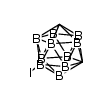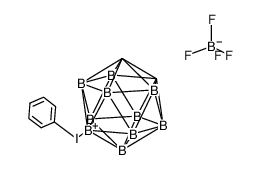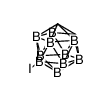426-79-9
| Name | Tetraphenylphosphonium Tetrafluoroborate |
|---|---|
| Synonyms |
Tetraphenylphosphonium tetrafluoroborate
EINECS 209-194-3 tetraphenylphosphanium,tetrafluoroborate MFCD00051889 Tetrakis(phenyl)phosphonium tetrafluoroborate |
| Melting Point | 300ºC |
|---|---|
| Molecular Formula | C24H20BF4P |
| Molecular Weight | 426.194 |
| Exact Mass | 426.133179 |
| PSA | 13.59000 |
| LogP | 5.60600 |
Synonym: Section 2 - COMPOSITION, INFORMATION ON INGREDIENTS
Risk Phrases: 20/21/22 36/37/38 Section 3 - HAZARDS IDENTIFICATION EMERGENCY OVERVIEW
Harmful by inhalation, in contact with skin and if swallowed. Irritating to eyes, respiratory system and skin.Hygroscopic (absorbs moisture from the air). Potential Health Effects Eye: May cause eye irritation. Skin: Causes skin irritation. Harmful if absorbed through the skin. Ingestion: Harmful if swallowed. May cause irritation of the digestive tract. Inhalation: Harmful if inhaled. Causes respiratory tract irritation. Chronic: Not available. Section 4 - FIRST AID MEASURES Eyes: Flush eyes with plenty of water for at least 15 minutes, occasionally lifting the upper and lower eyelids. Get medical aid. Skin: Get medical aid. Flush skin with plenty of water for at least 15 minutes while removing contaminated clothing and shoes. Ingestion: Get medical aid. Wash mouth out with water. Inhalation: Remove from exposure and move to fresh air immediately. If not breathing, give artificial respiration. If breathing is difficult, give oxygen. Get medical aid. Notes to Physician: Section 5 - FIRE FIGHTING MEASURES General Information: As in any fire, wear a self-contained breathing apparatus in pressure-demand, MSHA/NIOSH (approved or equivalent), and full protective gear. Extinguishing Media: Use foam, dry chemical, or carbon dioxide. Section 6 - ACCIDENTAL RELEASE MEASURES General Information: Use proper personal protective equipment as indicated in Section 8. Spills/Leaks: Vacuum or sweep up material and place into a suitable disposal container. Section 7 - HANDLING and STORAGE Handling: Avoid breathing dust, vapor, mist, or gas. Avoid contact with skin and eyes. Use only in a chemical fume hood. Storage: Store in a cool, dry place. Store in a tightly closed container. Section 8 - EXPOSURE CONTROLS, PERSONAL PROTECTION Engineering Controls: Use adequate ventilation to keep airborne concentrations low. Exposure Limits CAS# 426-79-9: Personal Protective Equipment Eyes: Not available. Skin: Wear appropriate protective gloves to prevent skin exposure. Clothing: Wear appropriate protective clothing to prevent skin exposure. Respirators: Follow the OSHA respirator regulations found in 29 CFR 1910.134 or European Standard EN 149. Use a NIOSH/MSHA or European Standard EN 149 approved respirator if exposure limits are exceeded or if irritation or other symptoms are experienced. Section 9 - PHYSICAL AND CHEMICAL PROPERTIES Physical State: Solid Color: Not available. Odor: Not available. pH: Not available. Vapor Pressure: Not available. Viscosity: Not available. Boiling Point: Not available. Freezing/Melting Point: > 300 deg C Autoignition Temperature: Not available. Flash Point: Not available. Explosion Limits, lower: Not available. Explosion Limits, upper: Not available. Decomposition Temperature: Solubility in water: Specific Gravity/Density: Molecular Formula: C24H20BF4P Molecular Weight: 425.9174 Section 10 - STABILITY AND REACTIVITY Chemical Stability: Not available. Conditions to Avoid: Incompatible materials, exposure to moist air or water. Incompatibilities with Other Materials: Strong oxidizing agents, strong bases. Hazardous Decomposition Products: Hydrogen chloride, nitrogen oxides, carbon monoxide, oxides of phosphorus, carbon dioxide, hydrogen fluoride gas. Hazardous Polymerization: Has not been reported. Section 11 - TOXICOLOGICAL INFORMATION RTECS#: CAS# 426-79-9 unlisted. LD50/LC50: Not available. Carcinogenicity: Tetraphenylphosphonium tetrafluoroborate - Not listed by ACGIH, IARC, or NTP. Section 12 - ECOLOGICAL INFORMATION Other No information available. Section 13 - DISPOSAL CONSIDERATIONS Dispose of in a manner consistent with federal, state, and local regulations. Section 14 - TRANSPORT INFORMATION IATA Not regulated as a hazardous material. IMO Not regulated as a hazardous material. RID/ADR No information available. Section 15 - REGULATORY INFORMATION European/International Regulations European Labeling in Accordance with EC Directives Hazard Symbols: XN Risk Phrases: R 20/21/22 Harmful by inhalation, in contact with skin and if swallowed. R 36/37/38 Irritating to eyes, respiratory system and skin. Safety Phrases: S 26 In case of contact with eyes, rinse immediately with plenty of water and seek medical advice. S 36/37/39 Wear suitable protective clothing, gloves and eye/face protection. WGK (Water Danger/Protection) CAS# 426-79-9: No information available. Canada None of the chemicals in this product are listed on the DSL/NDSL list. CAS# 426-79-9 is not listed on Canada's Ingredient Disclosure List. US FEDERAL TSCA CAS# 426-79-9 is not listed on the TSCA inventory. It is for research and development use only. SECTION 16 - ADDITIONAL INFORMATION N/A |
| Hazard Codes | Xn:Harmful; |
|---|---|
| Risk Phrases | R20/21/22;R36/37/38 |
| Safety Phrases | S26-S36/37/39 |
| HS Code | 2931900090 |
|
~95% 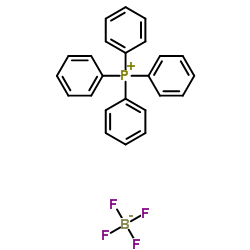
426-79-9
Detail
|
| Literature: Grushin, Vladimir V.; Demkina, Iraida I.; Tolstaya, Tat'yana P. Inorganic Chemistry, 1991 , vol. 30, p. 1760 - 1765 |
|
~86% 
426-79-9
Detail
|
| Literature: Grushin, V. V.; Tolstaya, T. P.; Lisichkina, I. N. Bulletin of the Academy of Sciences of the USSR, Division of Chemical Science (English Translation), 1983 , vol. 32, p. 1957 - 1960 Izvestiya Akademii Nauk SSSR, Seriya Khimicheskaya, 1983 , vol. 32, p. 2165 - 2168 |
|
~82% 
426-79-9
Detail
|
| Literature: Grushin, V. V.; Tolstaya, T. P.; Lisichkina, I. N.; Grishin, Yu. K.; Shcherbina, T. M.; et al. Bulletin of the Academy of Sciences of the USSR, Division of Chemical Science (English Translation), 1983 , vol. 32, p. 429 - 431 Izvestiya Akademii Nauk SSSR, Seriya Khimicheskaya, 1983 , vol. 32, p. 472 - 473 |
|
~82% 
426-79-9
Detail
|
| Literature: Grushin, V. V.; Tolstaya, T. P.; Lisichkina, I. N.; Grishin, Yu. K.; Shcherbina, T. M.; et al. Bulletin of the Academy of Sciences of the USSR, Division of Chemical Science (English Translation), 1983 , vol. 32, p. 429 - 431 Izvestiya Akademii Nauk SSSR, Seriya Khimicheskaya, 1983 , vol. 32, p. 472 - 473 |
| Precursor 3 | |
|---|---|
| DownStream 0 | |
| HS Code | 2931900090 |
|---|---|
| Summary | 2931900090. other organo-inorganic compounds. VAT:17.0%. Tax rebate rate:13.0%. Supervision conditions:AB(certificate of inspection for goods inward,certificate of inspection for goods outward). MFN tariff:6.5%. General tariff:30.0% |


